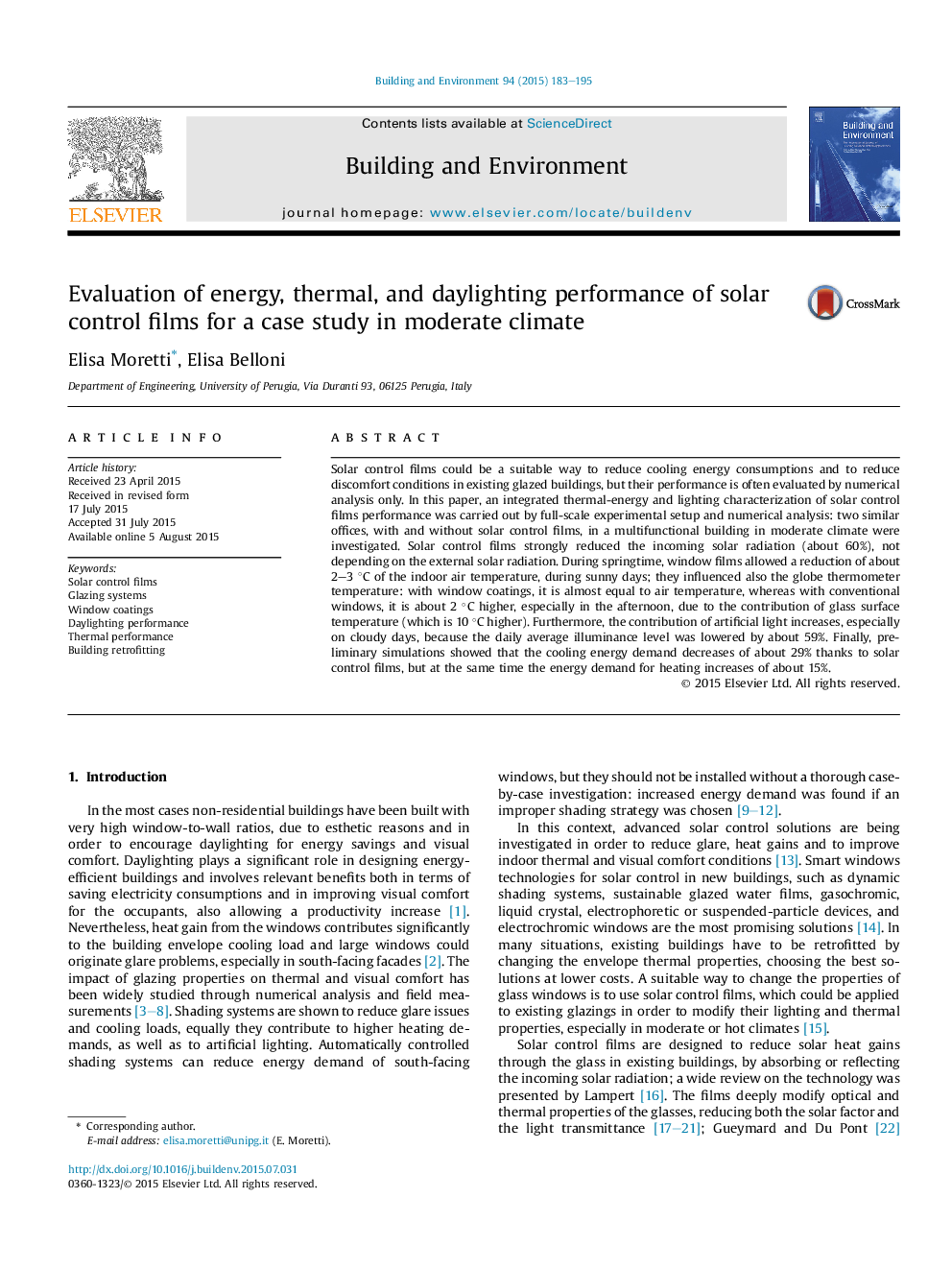| کد مقاله | کد نشریه | سال انتشار | مقاله انگلیسی | نسخه تمام متن |
|---|---|---|---|---|
| 247804 | 502528 | 2015 | 13 صفحه PDF | دانلود رایگان |
• This study develops an experimental analysis of solar control films performance.
• The incoming solar radiation reduction was about 60% both on sunny and cloudy days.
• Sun control films reduced indoor air temperatures of about 2 °C on sunny days.
• The daily average illuminance level with solar films was lowered by about 60%.
• The cooling energy demand was cut by 29%, but the heating one increased by 15%.
Solar control films could be a suitable way to reduce cooling energy consumptions and to reduce discomfort conditions in existing glazed buildings, but their performance is often evaluated by numerical analysis only. In this paper, an integrated thermal-energy and lighting characterization of solar control films performance was carried out by full-scale experimental setup and numerical analysis: two similar offices, with and without solar control films, in a multifunctional building in moderate climate were investigated. Solar control films strongly reduced the incoming solar radiation (about 60%), not depending on the external solar radiation. During springtime, window films allowed a reduction of about 2–3 °C of the indoor air temperature, during sunny days; they influenced also the globe thermometer temperature: with window coatings, it is almost equal to air temperature, whereas with conventional windows, it is about 2 °C higher, especially in the afternoon, due to the contribution of glass surface temperature (which is 10 °C higher). Furthermore, the contribution of artificial light increases, especially on cloudy days, because the daily average illuminance level was lowered by about 59%. Finally, preliminary simulations showed that the cooling energy demand decreases of about 29% thanks to solar control films, but at the same time the energy demand for heating increases of about 15%.
Journal: Building and Environment - Volume 94, Part 1, December 2015, Pages 183–195
